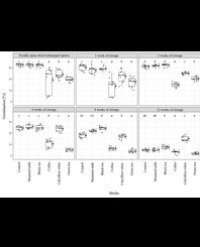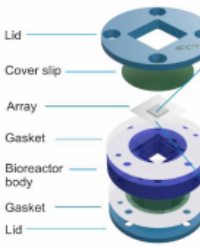
Formulation of Spray-Dried Cordyceps fumosorosea Submerged Spores Containing Water-Soluble Sunlight Protectants
This research aimed to enhance the stability of Cordyceps fumosorosea spores (JKI-BI-1496) using spray-drying with water-soluble sunlight protectants. Submerged spores (ss) of JKI-BI-1496 were tested for survival after spray-drying. Humic acid Na, humic acid K, lignin, black tea, cocoa, coffee, skimmed milk, green tea, and calcofluor white were evaluated for integration into the spray-drying process. Absorbance profiles (280 - 800 nm) were examined. Spray-drying was conducted at 65 °C inlet, 48 °C outlet, and a maximal product temperature of 35°C. Skimmed milk powder was used as a protective agent, forming a suspension with 5% skimmed milk, 5 × 106 ss mL-1 spores, and 5% protectants. Germination rates were assessed after 1 - 4 hours of simulated solar radiation. Spores coated with black tea showed the highest germination rate (48.3%) after 4 hours, compared to < 18% with other protectants. Calcofluor white-coated spores exhibited 44.9% germination after 12 weeks at 6 °C. Black tea and calcofluor white, enhance the stability of JKI-BI-1496 spores, indicating their potential for outdoor agricultural applications.
Nushrat H. Antara and Dietrich Stephan*

